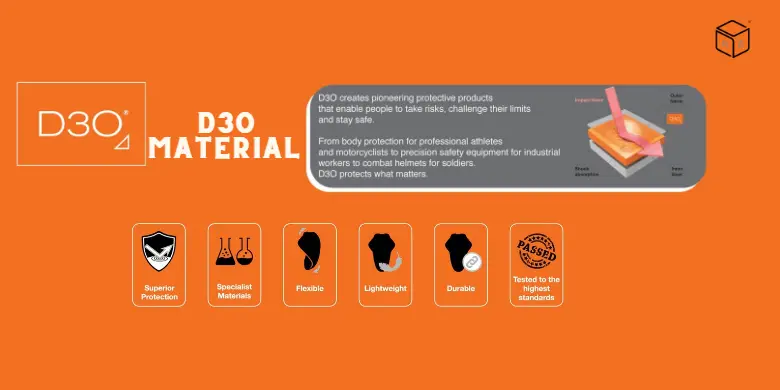In today’s increasingly digital world, biometric authentication has become a cornerstone of secure access control. From unlocking our smartphones to verifying identities in critical applications, the reliance on fingerprints, facial recognition, and other biometric data is growing exponentially. But alongside this growing reliance comes a real urgency for strong security measures. The evolution from L0 to L1 security in biometric devices is a testament to this necessity, marking a significant leap forward in safeguarding sensitive information.
For years, L0 has been the cornerstone for verification of identity through biometric devices. While they served the basic purpose well enough, they did provide a certain peace of mind when it came to confirming identity. However, as technology advanced and security threats became more sophisticated, the limitations of L0 devices became increasingly apparent as UIDAI stopped the L0 fingerprint devices . This has led to the development and adoption of L1 certified devices, designed to address the vulnerabilities inherent in their predecessors.
Understanding the Shift: Why L1 is Essential
The transition from L0 to L1 is not just a technical upgrade but a significant shift in security philosophy. This change is driven by the increasing threat landscape, where cybercriminals continuously develop new methods to exploit vulnerabilities. L0 Devices have been useful before but now they are much more open to attacks by making fake things. This really makes them less reliable for high security.
But when it comes to L1 devices, they have another strategy, and that’s to deal with these constantly changing and growing threats through tougher security measures. They incorporate advanced biometric authentication methods, including liveness detection and anti-spoofing technologies, to ensure that only genuine users can access sensitive systems. These improvements make L1 devices much more secure and resistant to fraud and to when someone tries to access them illegally.
With threats getting online every day, companies and folks who make rules for the business world also realize they need to step up for security. UIDAI Governments and other companies like banks that handle important information, are requiring level one compliance. They want this level of security to protect peoples’ identities too. This transition is not merely an enhancement but a necessary evolution in security standards to stay ahead of malicious actors.
Ultimately, upgrading to L1 fingerprint device is a proactive step toward fortifying security systems, ensuring trust in biometric authentication, and preventing unauthorized breaches. With its robust capabilities, L1 fingerprint device technology represents the future of secure identity verification.
Why is the L1 device superior to L0 devices?
1. Enhanced Spoofing Detection
Devices that are basically fine but they often come up short because they don’t have the super cool algorithms and sensors that really help in stopping fake attempts at spoofing. That meant tricks like fake fingerprints and silicone masks that masquerade as real human touches could cause problems with the system.
L1 devices, on the other hand, incorporate advanced technologies like liveless fingerprint detection. This feature analyzes various physiological parameters, such as blood flow, skin elasticity, and temperature, to ensure that the biometric data originates from a living person. This significantly reduces the risk of successful spoofing attacks.
2. Improved Algorithm Security
The L1 fingerprint Devices match algorithms for biometrics. These algorithms are designed to be more resistant to adversarial attacks, where malicious actors attempt to manipulate the system by feeding it carefully crafted data.
The algorithms are more frequently updated, and patched in case of a breach, something that was lacking in L0 devices.
3. Tamper Resistance
L1 devices are built with enhanced tamper-resistant features, making it more difficult for unauthorized individuals to physically manipulate or modify the device. This includes sturdier enclosures for the physical stuff, encrypted safe spaces to store the fingerprint and iris templates and security measures to spot if someone’s trying to break in.
4. Regulatory Compliance
Across many industries and government agencies today it’s clear that we’re seeing a push for higher standards for authentication thanks to biometrics. L1 certification aligns with these requirements, ensuring compliance with evolving regulations and best practices.
5. Data Protection
L1 devices often include enhanced encryption and secure storage of biometric data, protecting sensitive information from unauthorized access and potential breaches.
The Inevitable Transition: L0 Devices Reaching End-of-Life
To ensure a secure and consistent environment, the UIDAI has mandated the phasing out of L0 fingerprint device. All L0 fingerprint devices will stop functioning from June 30, 2025. This deadline is crucial for organizations and individuals to transition to L1 fingerprint devices.
Removal of previously approved L0 devices from Aadhaar authentication use
| Device-model | DEvice Name | Name of manufacturer | Validity |
| MSO1300 E2/ E3 L0 | Idemia Morpho | Smartchip India Pvt Ltd | 01-05-2025 |
| HU20A | Secugen | Secugen India Pvt Ltd | 01-05-2025 |
| MFS100 | Mantra | Mantra Softech (India) Pvt Ltd | 01-06-2025 |
| FM220U | Access | Access Computech Pvt. Ltd | 01-06-2025 |
| HU20AP | Secugen | Secugen India Pvt Ltd | 01-07-2025 |
| PB510 | Precision | Precision Biometric India Private Limited | 01-07-2025 |
The New L1 Device: Advanced Security, Same Core Functionality
Really, what’s key to understand is that making the move to a first language doesn’t mean throwing out everything you’ve got and starting again from scratch. Companies can keep using their biometric security systems with very little trouble and chaos happening. The thing that really doesn’t change when people use biometric devices is the core functionality. It’s the same as L0 devices, so people can interact with and use them just as smoothly as they do with L0 fingerprint device. The main difference for us really is advanced security features that L1 devices include to fight against new and evolving threats.
L1 fingerprint devices are essentially enhanced versions of their L0 predecessors, designed to provide stronger protection against spoofing, tampering, and unauthorized access. These devices have exactly the same specs for hardware, the same look to the device and same user interfaces too, making the changeover really smooth and hassle free. Users won’t need to do much retraining, and IT team members can blend new devices with existing security systems with just small tweaks.
One of L1 devices’ main goals is to completely fortify security with really sophisticated algorithms, authentication for detecting real flesh and blood people and strong encryption methods. These enhancements ensure that biometric authentication remains highly secure and resilient against sophisticated attacks.
As cyber threats continue to evolve, adopting L1 technology becomes a necessity rather than a luxury. It allows companies to be ahead of threats and it also gives users a familiar experience, making the switch both completely practical and vital.
Why Upgrade Now?
- Avoid Disruptions: Waiting ’til the last minute for upgrades can totally be a problem sometime. By making the switch to the new L1 device now, companies can have an easy and smooth transition.
- Enhance Security Posture: Moving to L1 devices is a big step that really upping the ante when it comes to security. It keeps data out of harm’s way and reduces risk of all kinds of things like data breaches and other security stuff.
- Maintain Compliance: Transitioning to L1 devices ensures compliance with evolving regulatory requirements, avoiding potential penalties and legal issues.
- Future-Proof Your Investment: L1 gear is super smart because it uses high technology built to stay relevant for a long time.
- Liveless Fingerprint Detection: One of the most important new features is improved live finger scanning. This will ensure that the device will not be tricked by fake fingerprints.
Embracing the Future of Biometric Security
The transition from L0 to L1 biometric devices is not just an upgrade; it is an important step toward building a secure, reliable, and future-proof authentication ecosystem. As cyber threats continue to evolve, traditional security measures are no longer sufficient to protect sensitive data and personal identities. L1 fingerprint devices that use biometrics add some really top security features designed especially to protect against the trickiest kind of deception and identity robbery. They also seal off unauthorized people from accessing things that need extra security.
By making this move, businesses, organizations and people can boost security levels without any loss of ease of use. L1 devices maintain the same great user experience as L0 gear, but they also get much better security measures like improved encryption and things to tell if a face is real or fake and not just a picture. These additional layers of protection ensure that biometric authentication remains a trustworthy and effective security solution in high-risk environments.
For industries that handle sensitive data, such as banking, healthcare, and government sectors, adopting L1 biometric devices is no longer an option but a necessity. More standards and oversight bodies are toughening security measures to safeguard user identities and confidential details.
Ultimately, upgrading to L1 is taking a proactive step to stay one step ahead of threats. It helps create a safer digital world where consumers and companies can authenticate securely. This raises the bar on computing security and reassures trust in this kind of biometric technology.
To purchase the latest L1 fingerprint devices with RD,👉 click here.👈
Transitioning to L1 really shows a real dedication towards keeping important stuff safe and making sure other people trust this biometric authentication too. When we really dig into why things change and then we take proactive steps to upgrade ourselves, we can set ourselves up really nicely for a future that feels secure and strong. Just like how we learn to upgrade to a better model of car to keep it running great and strong for a long time, we also need to learn new things for ourselves so we can have a secure and stable future.
In conclusion, switching from L0 to L1 security level is essential for biometric devices to ensure robust security, compliance with international standards, and protection against advanced threats.
FAQ’s
Que: What is the L0 to L1 device transition?
Ans: The L0 to L1 device transition is a step forward to replace L0-compliant fingerprint devices with L1-compliant fingerprint devices to reinforce the authentication of Aadhaar.
Que: What are the main differences between L0 and L1 devices?
Ans: L0 devices use optical sensors and encrypt data on the host, whereas L1 uses capacitive sensors and encrypts data on the scanner. All devices have to upgrade to L1 by 30th September 2024 for advanced security as well as UIDAI standards.
Que: What are the environmental benefits of upgrading to L1 devices?
Ans : Transitions to L1 devices will also usher in the other environmental benefits in the forms of up to 90% reduced energy usage through smart lighting, lower carbon emissions due to renewable energy usage, reducing pollution through efficient generation, enhanced indoor air quality due to home automation, and eco-friendly e-waste disposal through recycling.
Que: What should I do if my L1 device is not working correctly?
Ans: If date and time are wrong you may restart the device and RD service, remove “BASE” through Device Manager after uninstalling and reinstalling the driver, connect the device. For more information contact on +918434384343-Radium Box support.




